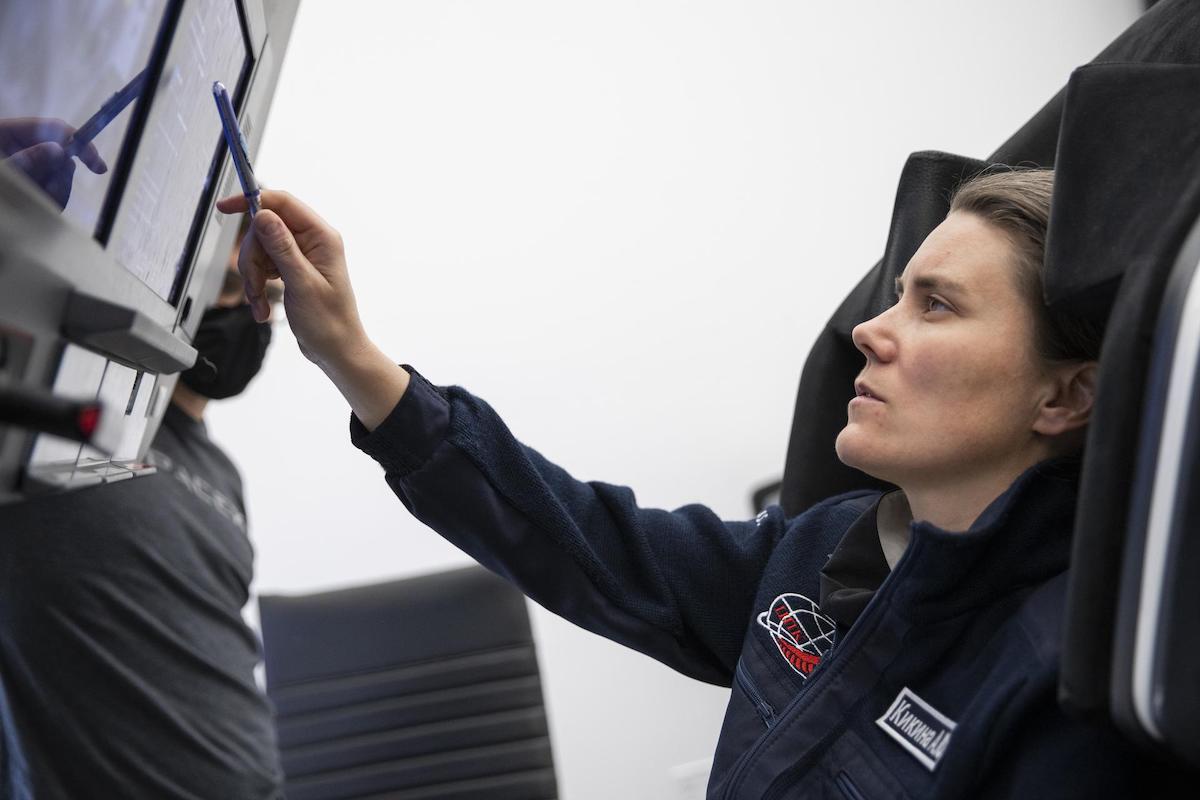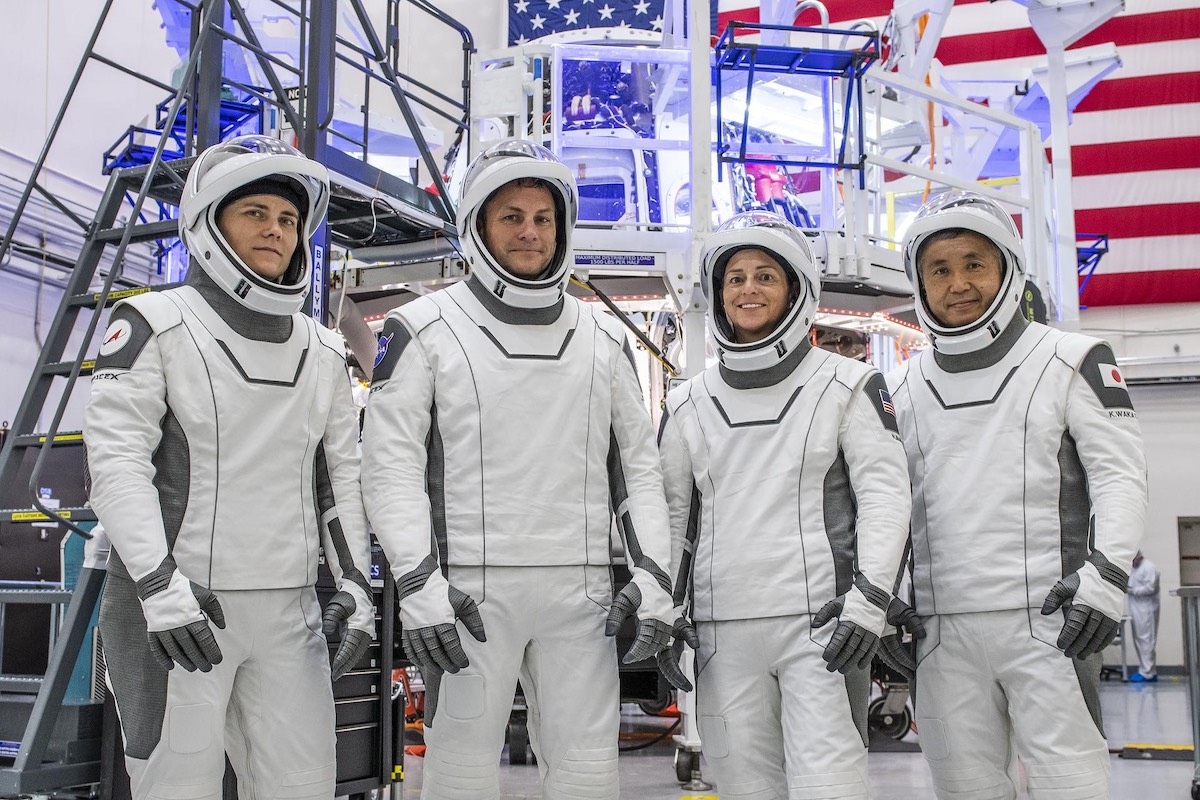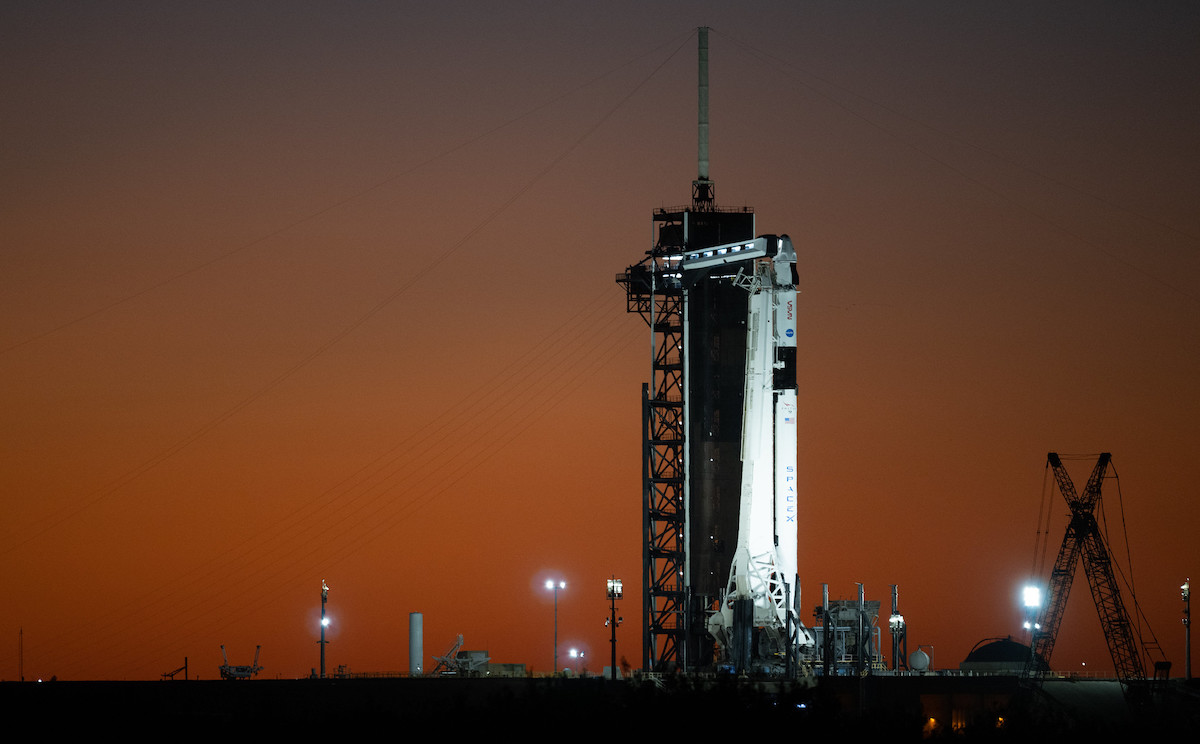
Cosmonaut Anna Kikina will become the first Russian crew member to launch on a U.S. spacecraft since 2002 when she straps into a seat aboard SpaceX’s Dragon Endurance capsule Wednesday for a flight to the International Space Station, opening a new chapter in the U.S.-Russian partnership in orbit that a senior Russian space agency official hopes can be extended past the current end date of 2024, despite souring relations on Earth.
Kikina, a first-time space flier, will sit in the right seat of the SpaceX crew capsule when it blasts off from NASA’s Kennedy Space Center in Florida on top of a Falcon 9 rocket. She will fly to space with three astronaut crewmates, led by commander Nicole Aunapu Mann, a U.S. Marine Corps colonel and former F/A-18 test pilot set to become the first Native American woman in space and the first woman to command a mission on a Dragon spacecraft.
Josh Cassada, a Navy captain and pilot with a doctorate in high energy physics, will fly in the pilot’s seat inside the Dragon Endurance spacecraft. Mann and Cassada are rookie astronauts.
Veteran Japanese astronaut Koichi Wakata will serve as a mission specialist on the Dragon Endurance spacecraft, and as a flight engineer after arriving at the space station. Wakata, seated on the left-hand seat of the capsule for launch, is preparing on his fifth trip to space, following prior flights on NASA’s space shuttle and Russian Soyuz spacecraft. The Falcon 9 and Dragon will be the third type of vehicle Wakata has flown into space.
The flight, known as Crew-5, will mark the fifth operational crew rotation mission to the station using a SpaceX crew capsule. It’s SpaceX’s eighth launch of astronauts overall, including a demonstration mission in 2020 for NASA, and two all-private crew flights to low Earth orbit.
The four-person Crew-5 mission is scheduled to launch at 12 p.m. EDT (1600 GMT) Wednesday from pad 39A at Kennedy Space Center. The Falcon 9, flying with a brand new reusable first stage booster, will head northeast from the launch pad over the Atlantic Ocean to line up with the space station’s orbital plane. The launch is timed for roughly the moment Earth’s rotation brings the space station’s orbit path over the space center.
Nine kerosene-fueled Merlin 1D engines generating 1.7 million pounds of thrust will burn two-and-a-half minutes to send the Dragon spacecraft out of the densest layers of the atmosphere. A single engine on the upper stage will accelerate the astronauts into orbit before the Dragon capsule separates from rocket around 12 minutes after liftoff.
The spacecraft will fly an automated approach to the station, culminating in a docking with the lab’s Harmony module at 4:57 p.m. EDT (2057 GMT) Thursday, assuming the Crew-5 mission gets off the ground Wednesday.
Mann, Cassada, Wakata, and Kikina will open hatches and float into the space station to join seven crew members already living and working at the research complex.
Kikina was confirmed as the fourth crew member for Crew-5 mission in July, when NASA and the Russian space agency, Roscosmos, finalized a “seat swap” agreement enabling Russian cosmonauts to launch and land on U.S. crew capsules and U.S. astronauts to fly to the space station on Russian Soyuz missions.
The seat sharing agreement is intended to ensure the space station is always staffed by at least one U.S. and one Russian crew member, allowing each country’s segment of the complex to remain fully operational even if there was a major problem or delay in U.S. or Russian crew launches.
The agreement is also designed to protect against the risk of a medical emergency forcing the evacuation of an entire Russian Soyuz or U.S. spacecraft crew. If that happened, at least one U.S. or Russian crew member would still remain on the station.
NASA astronaut Frank Rubio launched to the space station Sept. 21 on a Soyuz spacecraft, alongside Russian cosmonauts Sergey Prokopyev and Dmitry Petelin.
“With the flight of Soyuz and flight of Crew-5, we will start what we call integrated crews, or exchange flights, when one crew member from the Russian segment will fly on an American vehicle and one American will fly on a Russian vehicle,” said Sergei Krikalev, a veteran cosmonaut and executive director of human spaceflight programs at Roscosmos, Russia’s space agency.
“This type of exchange will increase the robustness of our program, and we will continue this practice to make our program more reliable,” Krikalev said.

The Biden administration announced earlier this year it supports extending NASA’s participation in the International Space Station program through 2030. NASA’s other partners on the ISS — Canada, Japan, and the European Space Agency — are expected to follow the U.S. lead, though those nations and agencies are still going through a formal extension process.
The new head of Roscosmos, Yuri Borisov, said in July that Russia would withdraw from the International Space Station program after 2024, spawning headlines that NASA’s main partner on the project could leave in as soon as two years.
But Russian officials quickly clarified the statement, saying Roscosmos would only leave the International Space Station after it builds an independent complex in low Earth orbit, something not expected before 2028, in a best case scenario for Russia’s space program.
“On the Russian side, we understand that we have extended our participation in the station with our government until 2024, but we start to think about designing and building a new station,” Krikalev said Monday. “But we know that it’s not going to happen very quick, so probably we will keep flying (on ISS) until we have some new infrastructure that allow us to continue human presence in low Earth orbit.
“So up to now, we keep flying together. We are going to fly until 2024, and I know that NASA already made the decision (to extend until 2030) and other international partners are discussing and ready to make this decision,” Krikalev said.
“And we (will) start to discuss extending our participation in the ISS program with our government, and hope to have permission to continue next year,” he said.
NASA and its partners have spent more than $100 billion building and maintaining the space station since the 1990s. Its lifetime has already been extended from earlier retirement dates in 2015 and 2020.
The station was largely completed in 2011 with the last flights of NASA’s space shuttle. The retirement of the shuttle left Russia’s Soyuz spacecraft as the only way for crews to travel to and from the station until SpaceX’s Crew Dragon came online in 2020 after a decade-long development in partnership with NASA.
Boeing has a similar NASA commercial crew contract as SpaceX, but its Starliner crew capsule has run into delays. The first Starliner flight with astronauts is currently scheduled for February. Once the Boeing spacecraft is operational, there will be three independent vehicles capable of ferrying astronauts and cosmonauts between Earth and the International Space Stanton.
Mann, Cassada, Wakata, and Kikina will spend about five months in orbit. The outgoing Crew-4 astronauts, who have been on the space station since April, will depart the complex in SpaceX’s Dragon Freedom spacecraft and head for splashdown off the coast of Florida around five or six days after arrival of the Crew-5 mission.
The Crew-4 mission is commanded by NASA astronaut Kjell Lindgren, on his second flight to space. NASA’s Crew-4 pilot Bob Hines, European Space Agency astronaut Samantha Cristoforetti, and NASA mission specialist Jessica Watkins will also come back to Earth on the Dragon Freedom spacecraft.

Mann, 45, is from California and earned degrees in mechanical engineering from the U.S. Naval Academy and Stanford University. She is registered with the Wailacki of the Round Valley Indian Tribes, and will fly to space with a dreamcatcher given to her by her mother.
Cassada, 49, is a former P-3 and P-8 aircraft pilot in the Navy. He was born in San Diego and considers White Bear Lake, Minnesota, as his hometown.
Mann and Cassada were selected as NASA astronaut candidates in 2013, and previously assigned to train for missions on Boeing’s Starliner spacecraft. After the Starliner program encountered delays, NASA reassigned Mann and Cassada to a SpaceX mission so they could fly to space sooner.
Wakata has a doctorate in aerospace engineering from Kyushu University in Japan, and was selected as an astronaut candidate by Japan’s space agency in 1992. The 59-year-old has logged 347 days in orbit on four previous missions, and could become the most experienced space flier not from the United States or Russia by the end of the Crew-5 mission early next year.
Kikina is a 38-year-old engineer and the only woman currently active in Russia’s cosmonaut corps. She graduated from Novosibirsk State Academy of Water Transport before her selection as a cosmonaut in 2012.
She initially trained to launch fly on a Soyuz spacecraft, then started preparing for a possible flight on a SpaceX Dragon capsule last year. She trained for several months for the Crew-5 mission before her assignment was finalized in July.
“My leaders pointed at me and told me do you want to be part of Crew-5,” Kikina recalled. “Yes, why not! But I was so surprised. It was, for me, not expected. After that, everything began very fast.”
Kikina’s duties on the space station will include operating the European robotic arm from a control panel inside the Russian section of the outpost. She is also certified for spacewalks using Russian Orlan spacesuits, but has no spacewalks currently planned during her stay in orbit.
Email the author.
Follow Stephen Clark on Twitter: @StephenClark1.
from Spaceflight Now https://ift.tt/mizcu4t
via World Space Info







0 comments:
Post a Comment